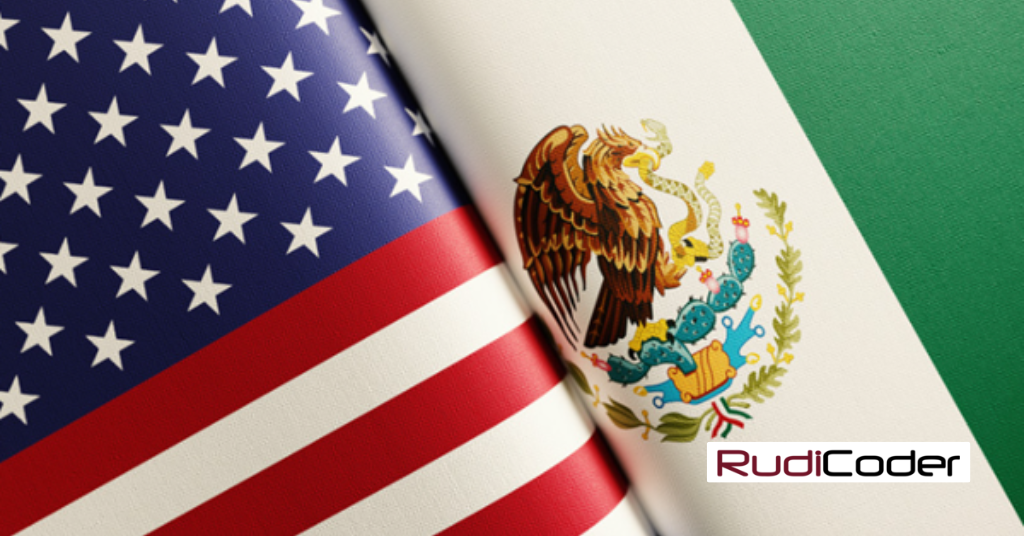Selling and Exporting Mexican Food and Beverage to the United States
Mexico is one of the largest exporters of food and beverages to the United States. According to data from the United States Department of Agriculture (USDA), Mexico was the leading supplier of agricultural imports to the United States in 2021, accounting for just over 74% of total U.S. agricultural imports. In the same year, Mexico exported $10.7 billion worth of consumer-ready food and beverage products to the United States.
Some of the largest quantities of food and beverage products exported from Mexico to the United States include fresh vegetables, fresh fruit, beer, wine, and snack foods. Overall, Mexico’s food and beverage exports to the United States have been steadily increasing over the past decade, reflecting the strong trade relationship between the two countries and Americans’ desire for Mexican food and beverage products.
Mexican food and drink are extremely popular in the United States. Most Americans love buying and indulging in Mexican food and beverages. According to research firm Technomic, the second more popular ethnic food is Mexican. You can see this in the quantity of Mexican restaurants in the US, the myriad of products offered at your local grocery store and online vendors. Some of the most popular Mexican food products purchased online by Americans include tortilla chips, Mexican candies, dried chilies, Mexican chocolate, tamale masa, salsa and hot sauce among others.
Producers and vendors of Mexican food and beverages have a remarkable business opportunity to sell to American customers. Selling Mexican food online to Americans can help expand a business’s customer base, increase convenience and thus satisfaction for customers, provide flexibility for your operations and your customers, reduce overhead costs, increase brand awareness.
The main reason to sell to Americans is to access to a larger market. Sales revenue for food alone (not including beverages) in 2022 was $964 billion USD with a projected future increase of 3.4% annually. By selling online, Mexican food sellers can reach this larger audience, beyond their own country and local community. An online marketplace allows sellers to expand their customer base to all parts of the United States, including areas where there may be a high demand for Mexican food but few existing options.
The second reason is flexibility. Mexican food and drink sellers can be more flexible with their businesses when they sell online. Businesses can take orders at any time of day or night and change what they have to offer based on what customers want. This flexibility allows for additional capture of customers and revenues.
Another reason is customer convenience. Online shopping has become increasingly popular as we have seen during the COVID pandemic. American consumers, of which 96% shop online, expect direct-to-consumer purchasing. Mexican food sellers need to meet this existing and growing selling demand to attract and retain customers.
Lessening overhead costs is another big benefit of online sales. By selling Mexican food and beverages online, businesses can avoid the costs that come with running a brick-and-mortar shop. This can include expenses such as rent, utilities and physical upkeep. Selling online can also cut down on the amount of space needed to store and display inventory.
And finally, Mexican food and drink makers and sellers can benefit from more people knowing about their brands: By being online, Mexican food and beverage retailers can build brand and inventory awareness, many of whom may not have known about a store in Mexico before searching online. Furthermore, these e-commerce retailers can use online marketing and social media to get the word out about their products and find new customers.
Here are several steps an ecommerce vendor should follow to send food from Mexico to the United States:
- Compliance with American Government Regulations- The vendor must ensure that the food and beverage they are sending complies with the regulations set by the S. Food and Drug Administration (FDA) and the U.S. Department of Agriculture (USDA). They must also have the necessary licenses and certifications for importing food into the U.S.
- Packaging and Labeling- The vendor must package the food and beverage in a way that protects it during transport as well as meeting US government requirements for labeling food for export. This includes providing information such as the name and address of the manufacturer, the ingredients of the food, and any food allergens.
- Custom Clearance- The vendor must ensure that the food and beverage they are sending has the necessary documentation for clearing customs in the U.S. This may include an invoice, a prior notice, and a certificate of origin, among other documents. However, Mexican retailers should not let the thought of this paperwork deter them from venturing into the American market. There are now apps such as PriorNotify that automate your US FDA prior notices with integration with most e-commerce platforms.
- Shipping Logistics- The online vendor will need to arrange for the transportation of the food to the US. They should consider factors such as transit time, cost, and the temperature requirements of the food when choosing a shipping method.
By following these steps, an e-commerce vendor can send food from Mexico to the United States in a safe and compliant manner. American consumers are literally hungry for Mexican food and beverage products. Whether Mexican candies, unique salsas or wines, Americans crave culinary delights from south of the border.
Mexican producers and retailers can take advantage of this massive market by creating and expanding their online presence to grow their business and revenue. While there are steps to take to ensure successful exporting of food and beverages into the United States, apps such as PriorNotify exist to assist.









